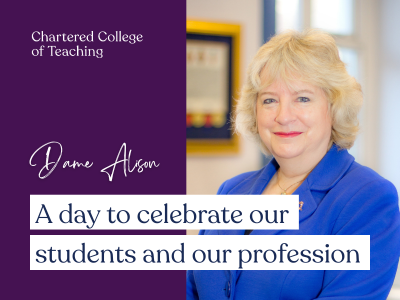A level & Level 3 results day 2025
As our students head into schools and colleges to collect their results, let’s celebrate the huge amount of work that has brought them to this point. This is the first cohort of 18-year-olds to have come through their exam years without the disruption of the pandemic, and I hope their results reflect their hard work. While we are rightly proud of them, this is also a day to celebrate the dedication of our profession. Teachers, leaders and support staff will be in schools and colleges today, nudging their students on to the next steps, and quietly supporting those who need additional help. Just like any other working day.
Today’s results are an important marker for individual students, a measure of what they have achieved and a stepping stone to the future. As a profession, this is also a time to reflect on the bigger picture of the education system in which we work. While the pass rate is up slightly across England, Wales and Northern Ireland, this year’s drop in the numbers of students taking A levels probably reflects a rebalancing since the pandemic. There was also a rise in the numbers taking T levels in England, and around 11,500 students in Wales took the Advanced Skills Baccalaureate, awarded for the first time this year.
But it is sobering to see that only two-thirds of the students who finish Key Stage 4 in England go on to achieve a Level 3 qualification by the time they are 19. While much of the public narrative will focus on A levels, almost a third of those young people take other Level 3 qualifications such as T levels and BTECs. The landscape of qualifications for 16-19 year olds is complex, and it can be difficult for teachers, students, parents and employers to navigate. We shouldn’t try to simplify the story by focussing on one or two ‘big ticket’ qualifications. Assessment needs to encompass every student, and we need to reflect on the breadth of the qualifications, their content and pedagogy, that we offer to young people. We’re pleased to be advertising for a teaching and assessment research specialist, to help us build different assessment approaches.
The headline figures hide the many disparities in take-up and attainment. As a profession, we see in our classrooms the differences between the take-up of maths and physics at A level (predominantly boys), and arts and languages (mainly girls). T-levels have shown even larger disparities, with FFT Education Datalab reporting that last year 94% of T level entrants for education and early years were girls, while 90% of those entered for engineering were boys. Looking at last year’s A-level attainment, White students had average point scores which were just under 4 points higher than those of Black or Black British students.
Poverty has an impact too. For example, the British Council reports that less than a third of the most disadvantaged secondary schools in England offer any language at A-level, while HEPI’s report of last year’s exams says that just 3% of students studying German and 6% studying French or Spanish at AS or A-level are eligible for free school meals. The regional gap in top grades has widened this year too. And we know that schools in disadvantaged areas find it harder to recruit subject specialists. So while I welcome the government’s focus on white working class students and those with SEND, we mustn’t lose sight of the intersectional impacts of race, class and gender.
Today is a day for celebrating the achievements, dedication and hard work of our students and our profession. When term starts in September, we must redouble our efforts to highlight and resolve the complex structural problems in education and society that disadvantage too many young people. I know that together we can build a system that enables our students – and our profession – to flourish.





